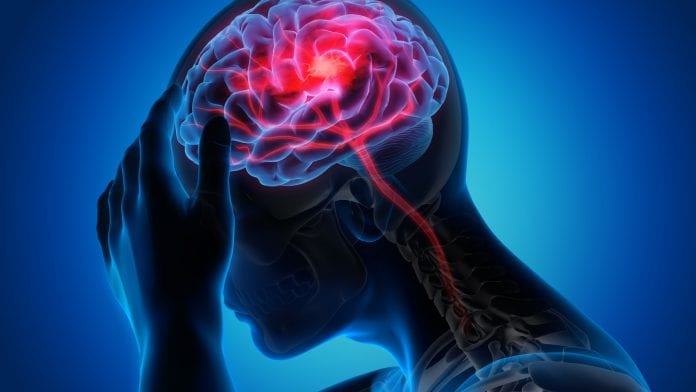
Dr Osama Zaidat tells HEQ about the health and economic implications of achieving the first pass effect in the treatment of acute ischemic stroke.
New research has indicated that achieving the coveted ‘first pass’ effect in the treatment of acute ischemic stroke, in addition to the health benefits it confers on stroke patients, can have a positive economic impact for clinical facilities.
Dr Osama Zaidat, lead author of the ‘Health economic impact of first pass success among patients with acute ischemic stroke treated with mechanical thrombectomy: a United States and European perspective study’, tells HEQ what this means.
What is the first pass effect in the context of treating stroke? What are its clinical benefits?
First pass effect (FPE) is the ability to open the occluded or clotted brain artery on the first attempt or pass after a patient has suffered an ischemic stroke. With FPE we are ideally aiming to completely or substantially reopen the artery. However, some may accept close to or near-complete recanalisation (opening) of the artery as an alternative marker for success.
Currently, we are judged on our ability to open the clogged arteries by the third pass. For example, it has been considered a success to re-vascularise more than 50% of the deprived ischemic brain area within three repeated passes of a given mechanical thrombectomy clot removal device. However, this pales in comparison to the potential impact of completely reopening the artery and re-establishing blood flow to 90-100% of the deprived ischemic brain from one single attempt. Clinically, this will lead to shorter procedure times and fewer potential complications for patients.
This was established in the ARISE II trial, which looked at patients presenting with disabling strokes who underwent mechanical thrombectomy using the CERENOVUS EMBOTRAP® Revascularisation Device to remove the clot from the brain artery.
Patients who achieved FPE had significantly higher rates of regaining clinical functional independence or return to baseline function at 90 days, versus patients who achieved revascularisation after more than one attempt, with fewer complications such as brain bleed or mortality.
Are there specific predictors for the first pass effect, or ways in which the odds of achieving the first pass effect can be increased?
This is one of the most important topics being discussed and evaluated: how to achieve FPE which has been shown repeatedly to influence clinical outcomes. There are two key factors that influence the ability to achieve the first pass effect: technical and biological.
Technical issues relate to clot removal techniques and adjunctive or accessory devices that boost clot retrieval and removal efficiency. When you consider how best to remove a clot, stent retrievers that allow us to engage and capture the clot with good integration and secure it in place are more likely to remove it at the first attempt. CERENOVUS’ EMBOTRAP is designed with that concept in mind. Aspiration technology is also evolving to achieve higher first pass success with larger bore catheters (LBC) with an internal diameter that increases to aspirate (puncture) the clot on the first pass.
Two of the most important biological factors that need to be considered in clot removal are the shape of the clot, and its composition. Clot burden, length and volume may affect the successful removal of the clot and whether first pass is achieved. Fibrin-rich clots are more resistant and may be more difficult to remove at a first pass. Having devices specifically designed for the removal of these fibrin-rich clots would again support removal in the first pass.
What are the key economic benefits of achieving first pass effect when treating ischemic stroke with mechanical thrombectomy?
Achieving first pass has been clearly shown to improve clinical and functional outcomes for patients and to reduce complication rates. This is critical for stroke patients and their families, as well as more broadly, for public health and society. This positive impact is well demonstrated in the recent ‘Health economic impact of first pass success’ report, published in the Journal of NeuroInterventional Surgery (JNIS).
This study has demonstrated short- and long-term economic impact of mechanical thrombectomy. Achieving first pass led to reduced nursing costs, reduction in use of critical care facilities and greater use of standard hospital care, which cumulatively achieved significant savings in the costs associated with hospitalisation and early management of close to $6,000 in the US. Subsequent savings on long-term care were estimated to be approximately $4,000. If a hospital can achieve first pass over 100 manual thrombectomies, the estimated annual saving could be approximately $1m.
Should mechanical thrombectomy be made more widely available for acute ischemic stroke patients?
This is a very complex question, and the simple answer is yes. A greater number of patients should have access to a treatment that offers such clear clinical benefits, but there is a challenge in how we do this. Mechanical thrombectomy is a complex procedure, with patients needing highly specialised care before and after surgery.
We have committed to making this effective therapy, carried out by a highly skilful and experienced stroke team, available to appropriate stroke patients as fast as possible. An example of this commitment is our Mission Thrombectomy 2020+ (MT2020+) initiative, sponsored by the Society of Vascular Neurology (SVIN) along with many other societies and industry partners, with an ambitious goal of having more patients treated with MT worldwide.
Do you intend to conduct additional or more targeted research in this field?
We need to better understand the predictors for FPE success and how we can make more effective use of this marker for success in stroke treatment, either by improving the technology we use or by increasing our knowledge of the biological factors that influence FPE.
Dr Osama Zaidat
Professor, North East Medical University
Neuroscience and Stroke Director
Neurology Residency and Endovascular
Fellowship Director
Bon Secours Mercy Health Neuroscience Institute
St Vincent Hospital, Toledo, OH
www.mercy.com/find-a-doctor/physicians/osama-o-zaidat/206351
This article is from issue 17 of Health Europa. Click here to get your free subscription today.
























